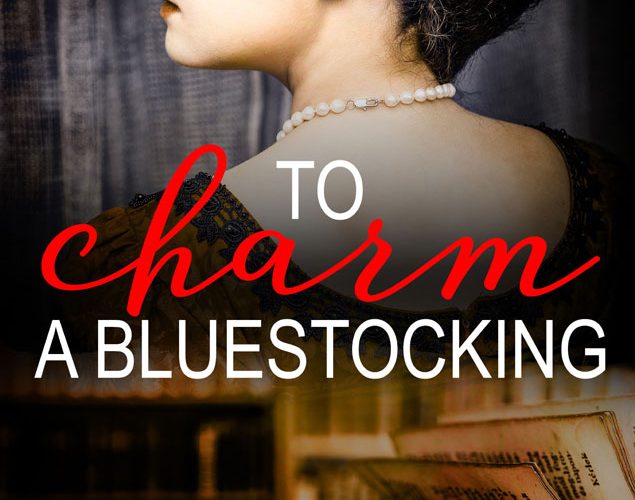The cover for To Charm a Bluestocking has been released.

I’m pleased that Escape Publishing kept my title, even though my husband said “A what? No-one will know what a bluestocking is.”
“Except every historic romance reader in the history of the genre,” I said.
The term ‘bluestocking’ to denote a clever woman was first used in literature in 1638. The concept is much older. Back in the 1400s, the Venetians had a group of intellectual men nicknamed ‘della calza’ (of the stocking). A century later, a selection of literary women in Paris were named the ‘bas bleu’. The idea gained prominence in English society in 1750 when The Blue Stockings Society was founded by coal heiress Elizabeth Montagu and three friends. Blue stockings were cheap men’s wear made of wool (what we would call working class socks today). Important (rich) men wore white silk stockings. Montagu’s group were initially seen as an elegant cultural innovation – a balance between fashion, feminine sophistication and virtue. In 1778, Richard Samuel painted the group as female celebrities, and the artwork featured on a pocket diary, to inspire women to write down their little musings.
Unfortunately, the idea of clever women was quickly seen as dangerous – especially considering the American Revolutionary War (1775-1783) and the French Revolution (1789-1799). Women might also forget their place in society and want something more. Bluestocking became an insult. In an 1811 play, a character says “The bluestocking is the most odious of creatures.” Lord Byron wrote in 1821 that fellow poet Felicia Dorothea Hemans should ‘knit bluestockings instead of wearing them’. Bluestockings had gone from a cute gathering to a group of radical political thinkers who spoke out for equality, liberty and social justice. Those who didn’t want change painted them as mannish, frumpy creatures – grotesque harridans with no graces who attacked each other over the tea-table.
The term fell out of fashion. Hardly surprising when it came with such negativity. But romance writers have reclaimed it for the clever women. Those women who could think for themselves. Who were not the vacant gossiping society girls. Who were slighted by society. But ultimately, who find true love because they are clever and interesting, not despite that fact.


I adore it when folks come together and share opinions, great site, keep it up.
Thanks for the history lesson! I’d heard the term but wasn’t sure what it meant … now I do! I’ve had a real brush with history the last few days, having been to Port Arthur and the the Cascades Women’s Factory (where the women who were transported to the Colonies were sent). I may become a history buff yet!